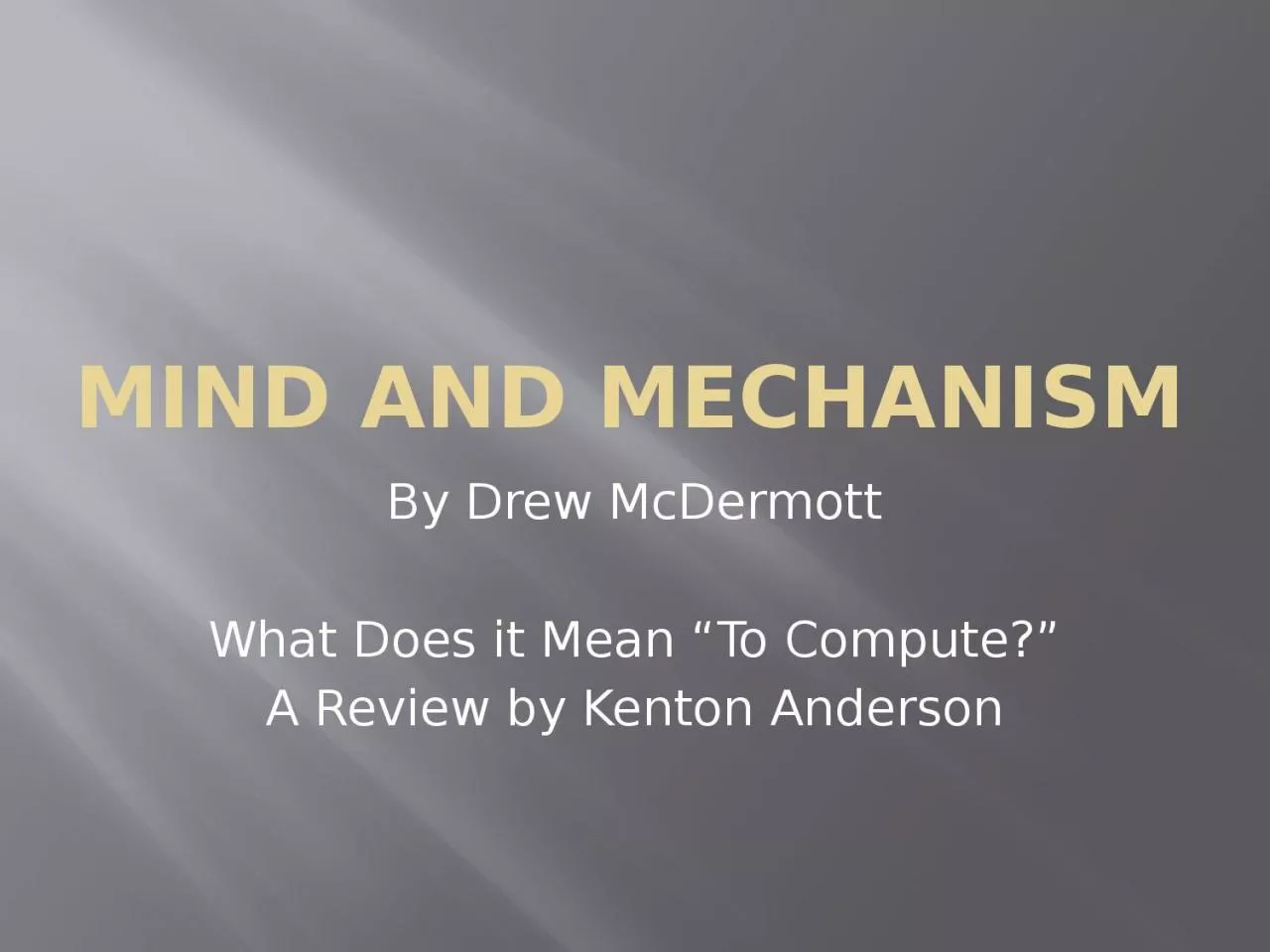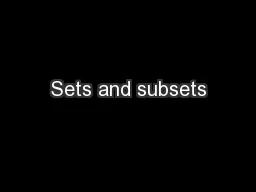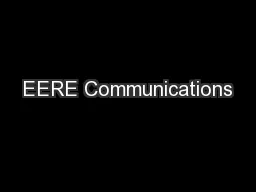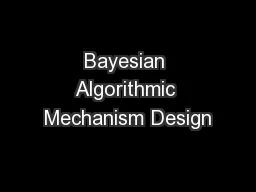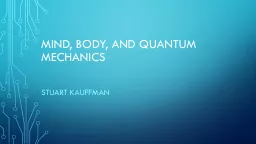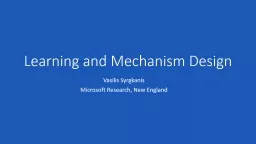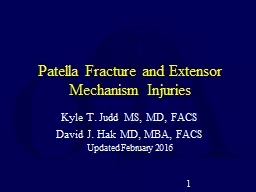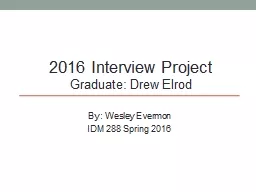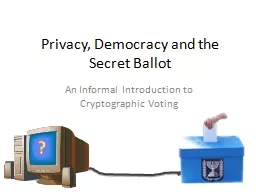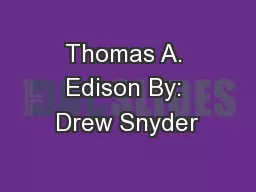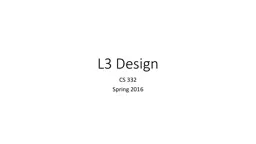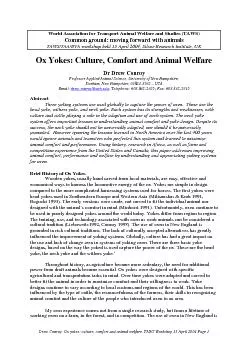PPT-Mind and Mechanism By Drew McDermott
Author : fanny | Published Date : 2022-06-18
What Does it Mean To Compute A Review by Kenton Anderson Major Players Chalmers Dennett Searle Crick and Koch Fodor McDermott David Chalmers httpwwwyoutubecomwatchvNK1Yo6VbRoo
Presentation Embed Code
Download Presentation
Download Presentation The PPT/PDF document "Mind and Mechanism By Drew McDermott" is the property of its rightful owner. Permission is granted to download and print the materials on this website for personal, non-commercial use only, and to display it on your personal computer provided you do not modify the materials and that you retain all copyright notices contained in the materials. By downloading content from our website, you accept the terms of this agreement.
Mind and Mechanism By Drew McDermott: Transcript
Download Rules Of Document
"Mind and Mechanism By Drew McDermott"The content belongs to its owner. You may download and print it for personal use, without modification, and keep all copyright notices. By downloading, you agree to these terms.
Related Documents

